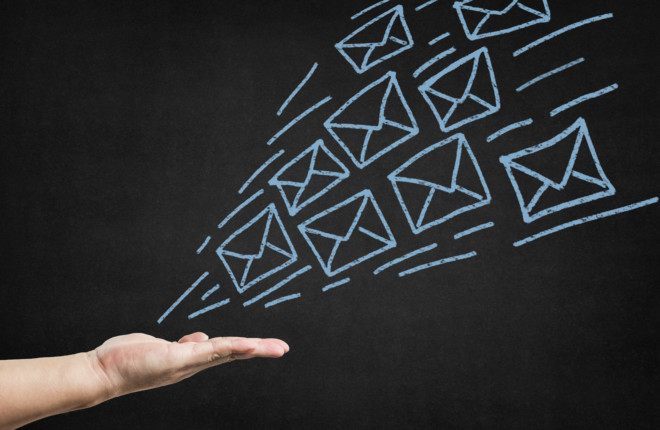For every $1 spent, email marketing drives nearly $44. It’s one of the most successful ways to market products and services, increase brand awareness, and enhance prospecting effectiveness. Compared to Facebook and Twitter, email is 40X more effective in acquiring new customers.
With email users projected to reach approximately 4.1 billion by 2021, it’s essential to start stepping up your email marketing game now. Writing attractive subject lines and using automation are not enough to power your email marketing campaigns. Bounce rate, deliverability, and domain reputation all play a crucial role in advanced email marketing.
We’re going to look at how each one can be improved to attain the ideal marketing outcome.
What is Email Marketing?
Email marketing is a rewarding digital marketing strategy that involves sending marketing emails to target audiences. The objective of an email marketing campaign is to convert recipients into customers and build a strong relationship with them. Email marketing is also a great marketing tactic to convert first-time buyers into loyal, recurring customers.
List building is essential for email marketing and requires accurate data. Modern email marketers use sophisticated tools to gather data to create error-free lists and fast-track their work. RevDriver, a free Chrome extension, is one such tool that allows users to collect direct contact data, including email addresses, of prospects while on their LinkedIn profile or company website. Free users can even export the data to their email marketing platform or CRM.
How to Reduce Email Bounce Rate
The average email bounce rate for all industries sits at 0.7%. With that said, every industry has its average bounce rate. For instance, the average bounce rate for advertising and marketing agencies is 1.1%. Retail has a bounce rate of 0.4%. If you are to achieve email marketing success, make sure you maintain the average bounce rate applicable to your industry.
Email authentication is key to reducing your bounce rate. Authenticate your sending domain to assure email recipients that you’re not a spammer and your emails are legitimate. Besides, you don’t want the receiving servers to mark your emails as unauthentic and junk.
Use email services with a good sender reputation and top-quality IP addresses. Furthermore, ensure that you use email addresses registered at your company’s business domain. Receiving domains that have implemented Domain-based Message Authentication, Reporting, and Conformance (DMARC) are likely to bounce your emails if you use a free domain send-from email address such as Gmail for bulk email sending.
Be sure to use opt-in, permission-based lists for your email marketing campaigns. This will ensure you only send emails to recipients who have given their consent for marketing emails, thus reducing your bounce rate.
About 70% of B2B marketers say that their top objective is to increase email list quality. Fake email addresses and erroneous data are common complaints of email marketers using cheap lists and incentivized sign-up forms to collect prospect contact data. Regularly clean your email list, check for duplicate data, and remove incorrect data entries to keep your bounce rate at the minimum.
Use data enrichment to improve the quality of your email marketing database and also maintain data hygiene and append missing information. This will help you target the right people and improve your email marketing results. Secondly, use the opt-in checkbox in your webforms to only add people to your email list who’re genuinely interested in your brand or marketing communications.
How to Improve Email Deliverability
Content is critical to increasing your email deliverability rate. If your email content is not interesting or engaging enough for recipients, it will reflect poorly on your deliverability over time. Use an email message format that makes your content easily consumable. Add short videos, statistics, or attractive images to enhance the readability of your marketing emails. Using video in an email increases the click-through rate (CTR) by 200-300%.
Further, customize your content according to what your recipients want to read. Do your homework, research your target audience, and create highly relevant content that shows you care about their problems and have the right solutions to offer.
Buyer intent data is a great tool that helps create targeted email marketing campaigns with personalized content. It can achieve up to 300% marketing ROI and 120% marketing engagement. Use intent data to your advantage to improve your content and nurture prospects with result-oriented email retargeting campaigns.
Sender identification is another factor that impacts email deliverability. It ensures that your email lands in the recipient’s inbox instead of the spam folder. DMARC, DomainKeys Identified Mail (DKIM), and Sender Policy Framework (SPF) are three vital forms of sender identification you need to have. They help significantly improve your deliverability, and thereby, your email marketing ROI.
Sender identification is one of the authenticators that email service providers use to filter emails. It proves to the receiving mail servers and service providers that you are who you claim to be. It helps avoid email fraud, makes the email ecosystem more trustworthy and secure, and restricts unauthorized parties from sending emails with your domain.
Sender identification protocols like DMARC, DKIM, and SPF indicate to receiving mailboxes that your emails are sent from a reputable source and safe to receive. They tell your recipients that you’re a responsible email sender and care about protecting them from email spoofing and phishing. Don’t forget to verify and update your sender identification records to maintain high email deliverability and email marketing viability.
Besides content and sender identification, there are other ways to increase your email deliverability success:
- Beware of spam traps, which mimic real email addresses to catch spammy domains.
- Get rid of inactive and invalid email addresses and those with hard bounces.
- Ensure that your email marketing software or data partner is fully compliant with regulations like GDPR and CCPA.
- Make it easy for recipients to unsubscribe from your emails if they want to. It’s better to see uninterested subscribers leave your email list than report your emails as spam.
How to Protect Email Domain Reputation
Are your emails generating positive recipient behavior? Is your subscriber engagement improving? Are you following the best sending practices? These are some of the important questions you need to ask to protect your email domain reputation.
Besides, make it a point to consistently monitor your domain reputation using tools like Google Postmaster. You can also monitor your domain reputation using services that gather data from multiple receiving mail servers for domain health checks. Further, determine if your domain appears in public blocklists. Search through public databases or use third-party mail filtering or anti-spam software to check whether your domain is listed “risky” or blacklisted. If you see a sudden drop in email opens, you’ll want to check your domain reputation.
Arrange your email sends as per engagement score to increase the odds of your emails reaching the inbox. The more your emails hit the inbox instead of bouncing, the better your domain reputation will be. Optimizing your sends helps your emails first reach the most engaged recipients who are happy to hear from you. You can also skip unnecessary sends and avoid frustration from recipients due to multiple touches. This increases your email deliverability, and therefore, your domain reputation.
Optimize your outreach according to the customer lifecycle or buyer’s journey stage of your recipients. For example, recipients who’re not engaged enough to be pushed to a later stage may require more touches or sends. On the other hand, those at the far end of their customer lifecycle or buyer’s journey may be excluded from receiving less valuable sends. They may only be sent emails that are most important and only when required.
Final Words of Advice
Personalization should be top of mind when looking to boost email marketing campaigns. Personalized email messages improve conversions by 10% and CTRs by 14% on average. Use reliable prospect or customer data for email personalization. Understanding your target audience’s interests, psychology, online and buying behavior, tech stack, business needs, and other data points better positions you to personalize your campaigns.
List segmentation is another best email marketing practice that helps increase prospect targeting and engagement while improving personalization. Segmented campaigns drive a 760% increase in email revenue. Find the necessary data you need to segment your recipients according to demographics, location, industry, buyer’s journey stage, company size, and more.
If you’re looking for accurate and human-verified B2B data to power your email marketing, SalesIntel’s got you covered. Our 95% accurate and comprehensive B2B data that’s reverified every 90 days is sure to help you make the most of your email marketing efforts.





